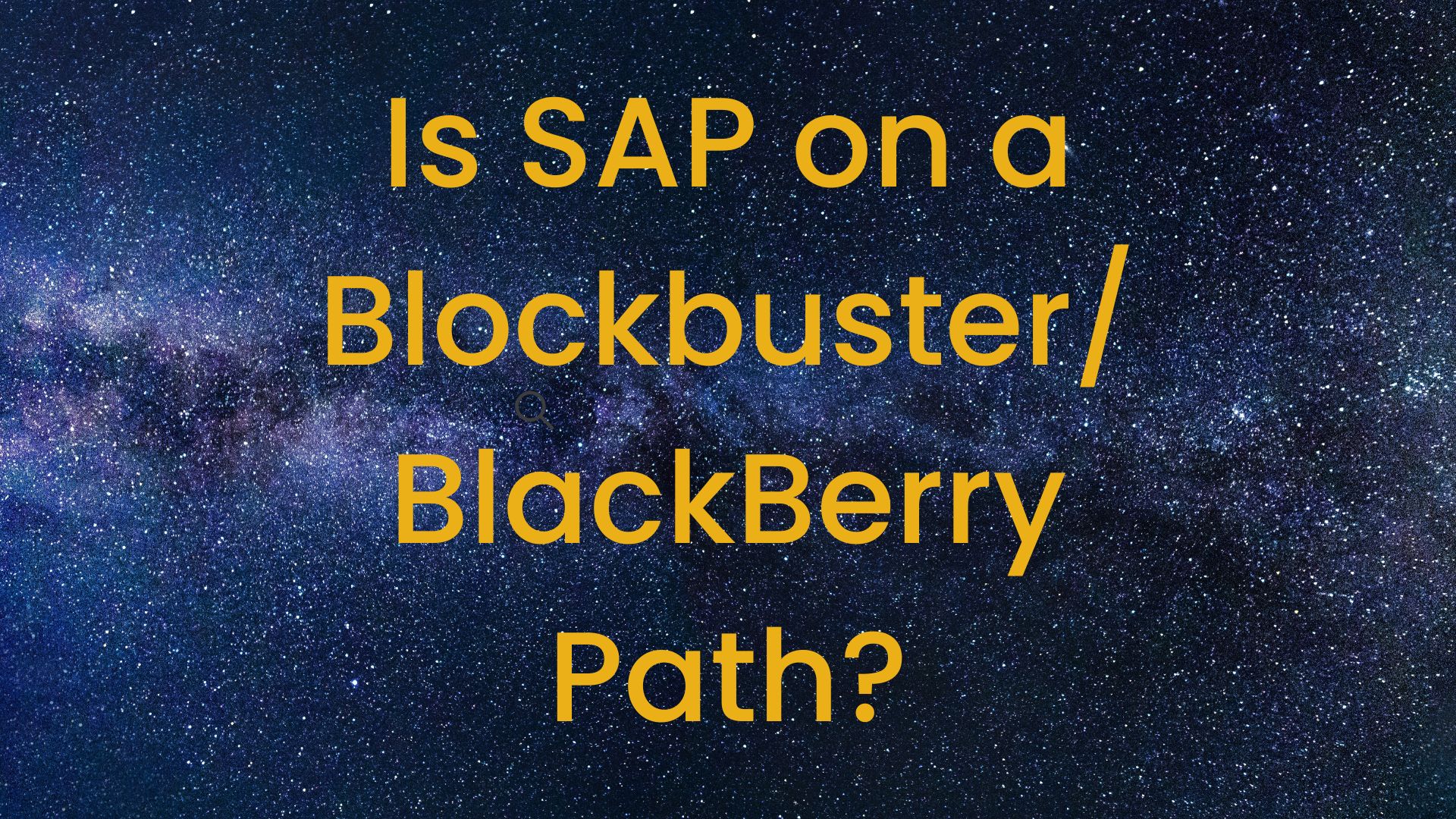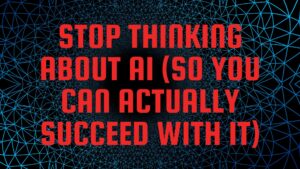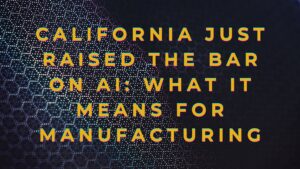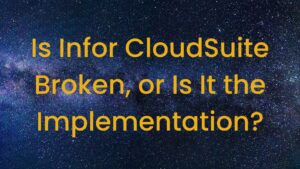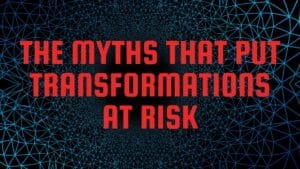What do SAP, Blockbuster Video, and the BlackBerry have in common? Potentially more than you think. I started my career as an SAP consultant in the late 1990s, and my team still supports clients on SAP today. From that vantage point, I’m seeing strategic patterns that look uncomfortably similar to what took down once-dominant brands. I’ll outline the risks I see, why they matter for customers, and, because I might be wrong, where SAP could still prove the skeptics wrong.
Table of Contents
ToggleThe Blockbuster & BlackBerry Playbook
Two cautionary tales:
- Blockbuster (2000): Turned down buying Netflix for $50M, clung to brick-and-mortar economics, late fees, and a model that couldn’t flex with mail-order and streaming.
- BlackBerry (mid-2000s): Dismissed the iPhone’s no-keyboard design and underestimated a new user experience. Dominance faded as the market shifted.
The pattern: incumbents protect a cash cow, underestimate a market shift, and read their customers through the lens of yesterday’s business model.
What This Looks Like Inside SAP
Here are the parallels I’m seeing today:
- Legacy gravity. Much of SAP’s architecture and thinking still traces back to an on-premise era. S/4HANA is the cloud future, but many ECC/R/3 customers haven’t moved, and SAP is leaning on end-of-support deadlines to force the transition. That’s a push strategy, not a pull.
- Monolith mindset vs. compossibility. The market is drifting toward composable enterprise stacks, best-fit services stitched together with robust integration and data platforms. SAP’s strength has long been the integrated monolith. Changing that DNA is hard, and incentives don’t naturally align to break up the suite.
- Customer misread the risk. The assumption that “because it’s SAP, customers will tolerate the path we set” echoes Blockbuster’s belief that renters would keep accepting the old model. Meanwhile, alternatives continue to mature around finance, supply chain, HCM, planning, and data.
None of this says “SAP is a bad product.” It says the strategy-customer fit is under pressure.
The Echo Chamber Problem
SAP’s ecosystem can mask weak signals:
- Internal scale: tens of thousands of employees “rowing the boat.”
- Partner network: hundreds of SIs incentivized to recommend and implement SAP.
- Analyst validation: big budgets with major firms translate into favorable coverage.
Ecosystems are powerful and blinding. When everyone near you says you’re winning, it’s easy to miss how frustrated customers feel about cost, complexity, or forced migrations.
Can SAP Change Fast Enough?
To SAP’s credit, they’ve invested in AI and are pushing S/4HANA hard. But three frictions remain:
- Speed: Cloud maturity and parity with legacy depth are still a journey.
- Inertia: Customers with large SAP estates change slowly, especially across global footprints.
- Cannibalization risk: Leaning into compossibility or radically simpler pricing/operations could undercut today’s revenue model, just as streaming threatened Blockbuster’s stores.
Meanwhile, focused competitors keep chipping away: cloud-native CRM, HCM, FP&A, and data platforms that do one thing exceptionally well and integrate everywhere.
Where I Might Be Wrong (Devil’s Advocate)
I could be underestimating three realities:
- Enterprise stickiness. Big companies move carefully. If you’ve standardized on SAP for decades, a wholesale shift is unlikely in the near term.
- Career safety. “Nobody gets fired for buying the category leader.” Executives still see SAP as a safe bet for core ERP.
- Sheer footprint. With tens of thousands of users at many clients, replacing SAP is a multi-year, multi-wave effort. Even if the market is shifting, that takes time.
These dynamics can keep SAP entrenched for years even if the strategy isn’t perfectly aligned with where the market’s headed.
What SAP Customers Should Do Now
Whether you’re staying on SAP, moving to S/4HANA, or evaluating options, here’s how to protect your outcomes:
- Run a real Phase 0. Clarify your target operating model, data posture, integration strategy, and adoption plan before you accept any SI timelines or budgets.
- Design for compossibility, even on SAP. Use SAP where it’s strongest, but insist on open integration patterns and a data platform that prevents suite lock-in from dictating every future choice.
- Pressure-test S/4HANA scope. Confirm functional parity or planned roadmap for the capabilities you rely on today. Pilot with production-grade data and end-to-end scenarios, no slideware.
- Harden change management. S/4 isn’t a technical upgrade; it’s an operating-model shift. Redefine roles, decision rights, and KPIs; then train to the role, not just the UI.
- Measure value in money and time. Tie the business case to cost, cycle time, risk, and revenue, then track it during design, testing, and after go-live.
- Negotiate leverage. Lock in commercial flexibility (subscriptions, exit ramps, integration rights, AI/data clauses). Don’t trade optionality for short-term discounts.
Resources
If you’re planning or in-flight on SAP, and want a vendor-neutral second opinion, my team at Third Stage can help you structure a Phase 0, evaluate compossibility options, or de-risk an S/4HANA roadmap.
- Guide to Successful S/4HANA Implementations
- Lessons from 1,000 Digital Transformations
- Composable ERP & Data Platform Checklists
SAP doesn’t have to repeat Blockbuster or BlackBerry. But customers shouldn’t bet their transformations on hope. Build optionality, insist on clarity, and design for change, on purpose, not by accident.


